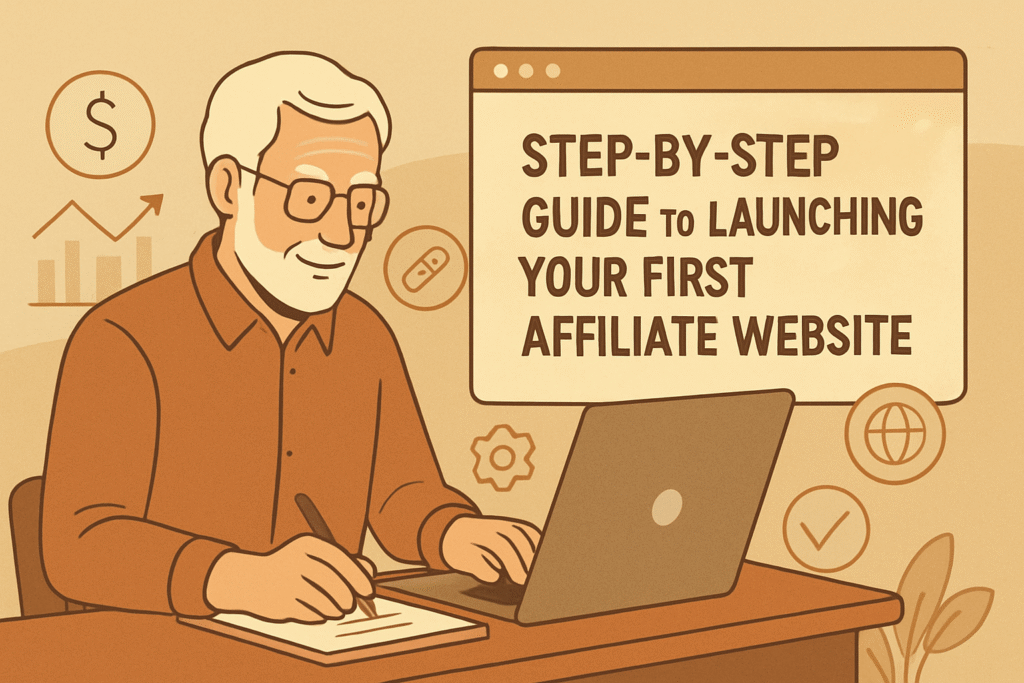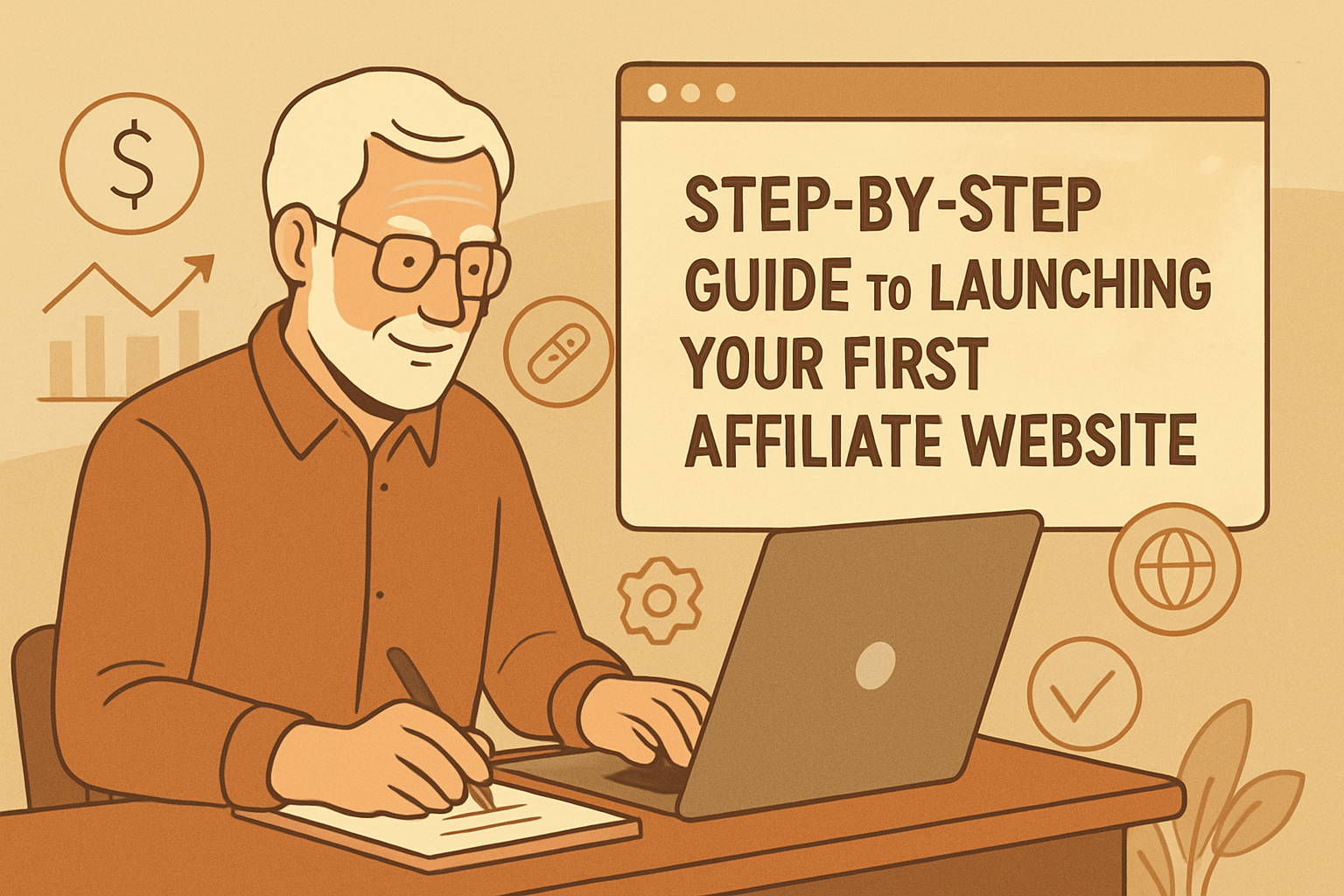Getting an affiliate website up and running opens up a great opportunity for extra income, even if you’ve never done it before. Affiliate marketing lets you earn by sending customers to other companies and getting a commission when they make purchases. Building a site isn’t complicated when you break down the steps, and I’ve seen plenty of beginners go from zero to steady, predictable income just by following the right process. Here’s a full walkthrough based on what’s worked for me and others starting out.
Understanding Affiliate Marketing Basics

Affiliate marketing makes it possible for anyone with a website and a bit of drive to make money by recommending products from different brands. When readers click on your affiliate links and buy products, you earn a commission. Famous companies like Amazon, ShareASale, and Rakuten run these programs, but smaller brands have them too. It’s a super flexible way to start earning online.
The basic idea is pretty simple: you set up a website, build helpful content around your niche, add affiliate links, and then get paid when your audience makes a purchase. The beauty of it is that you don’t need your own products or to handle any shipping or support.
Getting Started: What You Need to Launch Your First Affiliate Website
Kicking off an affiliate site starts with a few basic tools and some focus. If you’re brand new, here’s what you need:
- Domain Name & Hosting: A simple, memorable website address people can type in. You’ll need hosting to keep your site online. Bluehost, SiteGround, or Hostinger are all worth checking out as beginner options.
- WordPress or Website Builder: WordPress is free, flexible, and used by lots of affiliate marketers. Wix or Squarespace are good choices if you want a drag and drop builder, but WordPress handles lots of traffic and plugins better.
- Theme & Plugins: A clean theme gives your site a pro look. Plugins for SEO, affiliate link management, and site speed help a lot. I recommend something lightweight like Astra or GeneratePress, plus an SEO plugin like Rank Math or Yoast.
- Basic Content: At launch, aim for a home page, a detailed “About” page, and a contact page. You’ll layer in your main content as you go.
Choosing a Profitable Niche
Your niche has a big impact on how quickly you’ll see results. A niche is just the specific topic or set of products your site focuses on. Popular choices include tech, travel, fitness, personal finance, or pet care, but there are endless possibilities. Picking something you’re genuinely interested in will keep you motivated, and you’ll spot unique angles for content your competitors might miss.
I’ve seen many newbies start broad and then narrow down once they stumble upon what their audience clicks with most. Run keyword research using free tools like Ubersuggest or Google Keyword Planner to see what topics have decent search volume but not too much competition. This helps you find a sweet spot where you can rank in search results and pull in visitors over time.
Another tip: when you’re checking different niches, try to spot trends or seasonality. Some niches do better at certain times of the year, such as fitness spikes in January or home improvement in the spring. This can help you plan your content calendar and publish articles when interest is at its peak.
Step by Step Guide to Building Your Affiliate Site
- Register Your Domain and Hosting: Once you’ve picked a niche, go for a simple domain (e.g., bestdogtoys.com for dog toys). Avoid numbers and special characters, as these can make it harder for visitors to remember your address. Sign up with your chosen hosting company, and connect your domain.
- Install WordPress and Pick a Theme: Most web hosts offer one click WordPress install. Pick a clean, mobilefriendly theme, as users trust sites that look good on all devices. A mobilefriendly site is no longer optional, since so much traffic comes from smartphones and tablets. Always check how your site looks on a phone before going live.
- Install Essential Plugins: Download and activate essential plugins for SEO, performance, backups, and affiliate link cloaking. Something like Pretty Links helps keep affiliate URLs tidy and makes it easier to swap out links if you ever need to. Remember to only use plugins you actually need, as too many can slow down your site.
- Create Core Pages: Add your homepage, About, and Contact pages. These are important for building trust and transparency with visitors. Write about yourself—share why you started the site, your experience with your chosen niche, and your commitment to helping readers.
- Sign Up for Affiliate Programs: Start with easy, approval light programs like Amazon Associates or CJ Affiliate. As your site gains traffic, you can apply for higher paying, private programs that offer better commissions or exclusive offers.
- Publish Content: Write five to ten articles or guides answering popular questions in your niche. For example: “Best Running Shoes for Flat Feet (2024)” or “How to Choose a Travel Backpack.” Mix in comparison reviews, top ten lists, and howtos. Your goal is to help visitors make a buying decision with confidence.
- Add Affiliate Links: Insert your affiliate links naturally into your guides and reviews. Always let readers know you earn a commission if they buy through your links. This builds trust and keeps you compliant with FTC rules. You can add a short disclosure at the top or bottom of posts.
Building Traffic: How to Get Visitors to Your Affiliate Website
Even the best affiliate website needs visitors to earn commissions. Search engine optimization (SEO) is usually the best longterm strategy. By writing genuinely helpful articles that answer your target audience’s questions, your content can rank on Google and attract free traffic for months or years to come.
Other practical ways to build traffic include:
- Social Media: Share your articles on Pinterest, Facebook Groups, Reddit, or wherever your target readers hang out. Pick one or two social platforms so you don’t burn out. Sharing consistently is more effective than trying to post everywhere at once.
- Email Newsletter: Offer a freebie (e.g., a checklist or ebook) to get people to join your list. Regular emails help keep your followers returning and clicking new affiliate links. Over time, a good email list acts as a direct traffic source and helps you build loyalty.
- Guest Posting: Write articles for similar blogs in your space and link back to your site for extra exposure and stronger SEO. Not only do you tap into the other blog’s audience, you also gain valuable backlinks that help your site rank higher in Google.
You might also consider creating short videos or infographics to share on social media. These formats can catch attention and send fresh visitors to your site. The key is to focus on where your audience is most active—no need to be everywhere, just make your presence count.
Monetizing: Making Your First Affiliate Sale

Your first sale is exciting and confirms you’re on the right track. It usually takes some weeks, and sometimes even months, of steady content creation before sales begin rolling in. Here’s how you can push things along and make that first commission:
- Answer Specific Problems: Articles like “Best Protein Powder for Beginners” or “How to Fix Slow WiFi” attract buyers who are already looking to purchase something. Help them decide, and add your affiliate links right in your recommendations.
- Use Strong Calls to Action (CTA): Let readers know what they can do next, like “Check price on Amazon” or “See today’s deals.” CTAs guide your audience down the page and through your link. Don’t be shy about at least one or two CTAs per post.
- Highlight Testimonials and Results: If you’ve tried products yourself, share the results and pictures. People love real examples, and seeing personal experience increases trust in your recommendations.
Most affiliate programs offer real time dashboards, so you’ll see when you earn commissions. Once you break the ice with that first sale, you’ll have the motivation to keep going. Every new sale after the first one feels easier.
Another tip: review your top posts for click rates on affiliate links. If certain posts get a lot of visitors but not many clicks, try tweaking the call to action or the placement of your links to boost your results. Learning from your own stats helps you step up your earnings going forward.
How Much Can You Make? ($100/Day and Beyond)
A question I get all the time: “Can you make $100 a day from affiliate marketing?” The answer is yes. It’s absolutely doable, but how long it takes depends on your niche, effort, and ability to build trustworthy content. There are people making just a few bucks a month, while others pull in thousands. The more traffic you have and the more buyerfocused your content is, the faster you’ll increase your earnings. To get to $100/day, focus on building up highquality articles that attract steady visitors and feature products with strong commissions. It takes consistent work for a few months, but after that, your old posts can keep earning you money around the clock. It’s really about sticking with it and letting your site grow over time.
Common Pitfalls and How to Avoid Them
Lots of beginners jump in too quick and spread themselves thin, so here are a few things to keep in mind:
- Ignoring SEO: It’s tempting to skip over optimizing your posts, but good keyword research and basic onpage SEO are super important for free traffic. Moz, Ahrefs, or Neil Patel’s blog offer reliable advice on getting SEO right. Don’t underestimate the value of learning SEO basics and updating old posts.
- Choosing Too Broad a Niche: Sites that try to cover everything struggle to rank. Target a specific reader first, then consider branching out after you establish yourself in your core topic.
- Not Disclosing Links: Always let your readers know you use affiliate links. This builds trust and is required by law in many places. A clear disclosure builds credibility and helps readers feel comfortable with your recommendations.
- Chasing High Payout Products Only: Sometimes lowerticket products sell way more often, especially if they’re items people need to replace or rebuy. Having a mix of both can help smooth out your earnings and keep sales steady.
Advanced Tips for Long Term Success
As your site grows, look into these strategies to give your results a boost:
- Test Multiple Affiliate Programs: Sometimes, one network will convert better or pay faster than another. Don’t be afraid to try alternatives if your current programs aren’t delivering expected results.
- Update Old Content: Keep your reviews and guides current, especially for fastmoving niches like tech or home gadgets. Adding new information, updated images, or fresh products can help posts regain or improve rankings.
- Build Backlinks: Reach out for collaborations, interviews, or guest spots to earn links from other reputable sites, and this gives your site an SEO boost. Building strong relationships with others in your niche pays off in the long run.
- Scale With Email & Funnels: Segment your email audience and create helpful minicourses or offer exclusive deals to keep earnings climbing. Consider using email sequences to build trust automatically and offer multiple affiliate products over time.
You can also add new features like comparison tables, video reviews, or downloadable guides to bring extra value to your readers. The more helpful and unique your content, the easier it is to attract return visitors and higher conversions.
FAQ: New Affiliate Marketer Questions
How do I start an affiliate marketing website as a beginner?
Start by picking a focused niche, registering a domain, setting up WordPress, publishing your first few helpful articles, and signing up for an entry level affiliate program like Amazon Associates. Commit to learning and testing as you go. Don’t expect to master everything at once—it’s all about building step by step.
Can you make $100 a day with affiliate marketing?
Making $100 a day is definitely possible, especially with targeted content and steady SEO growth. Most people reach it within several months, though it depends on work put in, chosen niche, and product commissions.
How do I get my first sale as an affiliate?
Write content aimed at helping people make a purchase, like “best of” lists or product comparisons. Share your articles in online communities where your audience hangs out and use strong calls to action.
What is the first step in affiliate marketing?
The first step is picking a niche you can stick with, doing research to make sure there’s an audience, then registering your site and getting it online. Everything else builds from there.
Wrapping up, launching your first affiliate website may sound like a big leap, but taking action is the real secret. Focus on one audience and one set of problems to solve. As you build trust, steady commissions will follow. Stick with it, update your content, and watch your work start to pay off month after month.



